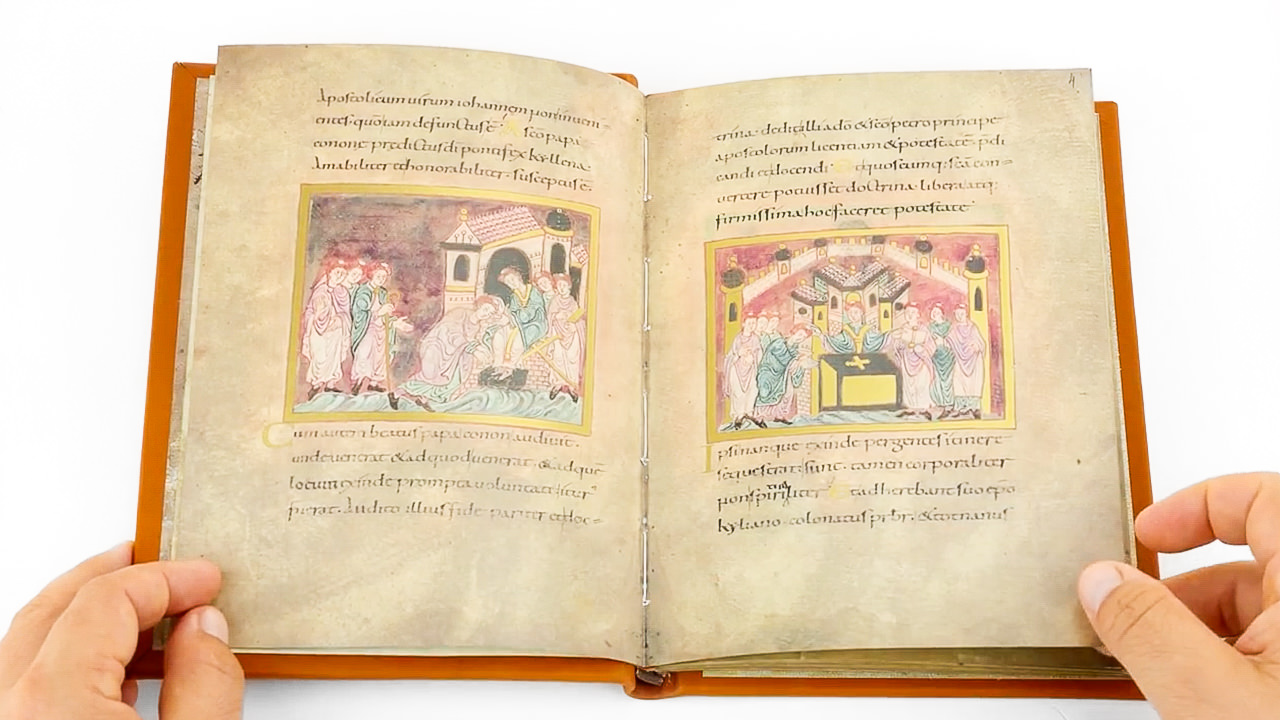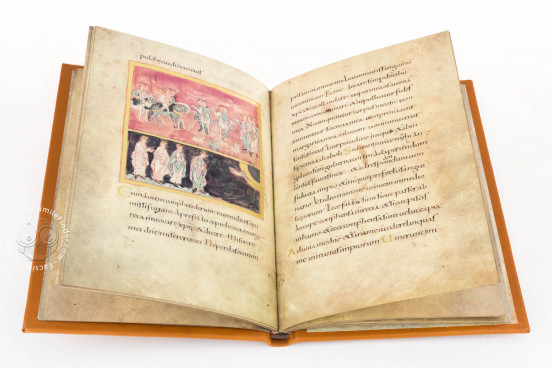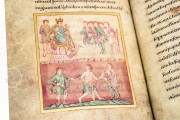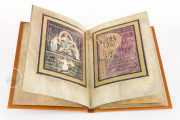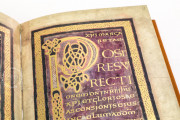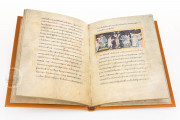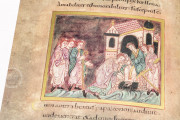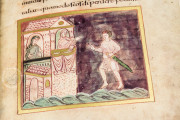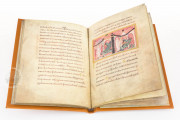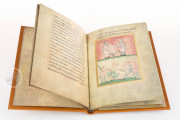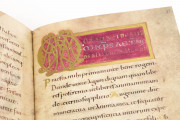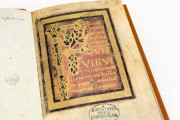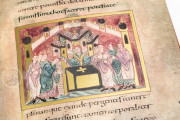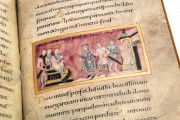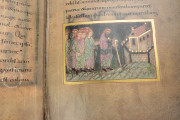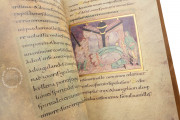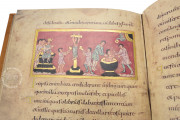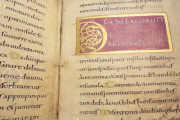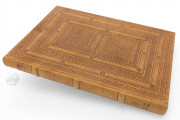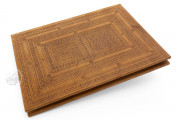The Vita Kiliani, or Passio Kiliani is one of the oldest surviving manuscripts of the genre known as Saints’ Lives, or vitae, and is considered to have been made around the year 975. It measures only 15 cm x 20.6 cm and consists of thirty-eight folios. Its small size would suggest it was an item for personal devotions, while the use of gold, silver, and a variety of pigments in the depictions indicate a luxury item. It was possibly made for a woman of wealth.
The manuscript includes the illustrated lives of Saints Kilian and Margaret and prayers to the Virgin, the Apostles and Christ. Kilian was Bishop of Würzburg and died a martyr in 689; his relics still reside in Würzburg. Margaret of Antioch, a fourth century martyr, was tortured for her desire to remain a virgin and a Christian.
Analysis of both text and depictions provides fascinating information on this manuscript, which was unknown before the nineteenth century. For example, the text of the life of Kilian reflects use of the late eight century text of the saint’s life entitled the passio minor by scholars, but also intriguingly shows that creators of the manuscript had knowledge of a later revised text, named by scholars as the passio maior, written in the Carolingian period. A conclusion made from this and other detailed analyses is that the manuscript was copied from a variety of sources, including Byzantine, but with certain alterations, particularly to the details in the depictions.
Two Saints, Two Pictorial Cycles
The cycle of eleven miniatures illustrating Kilian’s life was created to reflect episcopal virtues and duties, while the cycle of ten miniatures of Margaret’s life has the single aim of demonstrating her chastity and faith.
The Margaret cycle relied on established cycles of her life and are close to Byzantine miniatures of martyrs’ passions; the Kilian cycle reflects the Late Antique style.
A still unidentified artist used lilac outlines to create the scenes, which were then painted and completed. However, two distinct color schemes within the cycles imply two colorists; details in the application of color also suggest that the artist was not one of the colorists.
A Single Hand
The script is a legible Caroline miniscule and is the work of a single scribe. The capitals were painted in gold, with smaller gold initials within the text to introduce sentences.
Evidence implies that either there was another scribe or artist involved in the gold work or the change in style was introduced for decorative reasons. At some much later stage, fine vertical lines were added to divide syllables and various spellings were altered.
A Conundrum
The only details of the provenance of the manuscript come from signatures on folio B and a London sale catalogue dated 1819. Previous owners noted include J. F. Mollerus 1765 and H. Schaedtler 1808. The catalogue lists the manuscript in the sale of "classical books" of a Dr. Moeller of Hanover.
If Dr Moeller and J. F. Mollerus are the same person, the book must have been in Hanover since at least 1765. It was evidently not included in the London sale as it was sold to Heinrich Schaedtler, registrar of the Köningliche Archiv in Hanover in 1808.
Despite the lack of conclusive evidence regarding the patrons of the manuscript, some observations are appropriate. The Kilian cycle suggests that this luxury item was a gift for a bishop, but the number of miniatures, with only one less for Margaret, implies equal prominence of the two saints, thus contradicting the above assumption.
Among other evidence, the use of feminine endings on the prayers on the last folios indicates that it might have been made for a woman, or women; the use of gold and silver further suggests a woman of wealth.
Alterations, Lacunae, and Wear
The gatherings are inconsistent and indicate that the manuscript was altered at some stage and rebound. Consideration of the gatherings and of the order of the folios strongly suggests the first page, which might have had some indication of the patron and/or owner, is missing.
It is also probable that miniatures are missing. Wear on folio 1r, implies that the manuscript was without a cover for some time; this is not unusual and characterizes other manuscripts, including vitae.
The current leather binding dates to the first half of the sixteenth century and is decorated with Italianate punchwork and gilding.
We have 1 facsimile edition of the manuscript "Vita Kiliani": Die Kilians- und Margaretenvita facsimile edition, published by Akademische Druck- u. Verlagsanstalt (ADEVA), 1987
Request Info / Price
